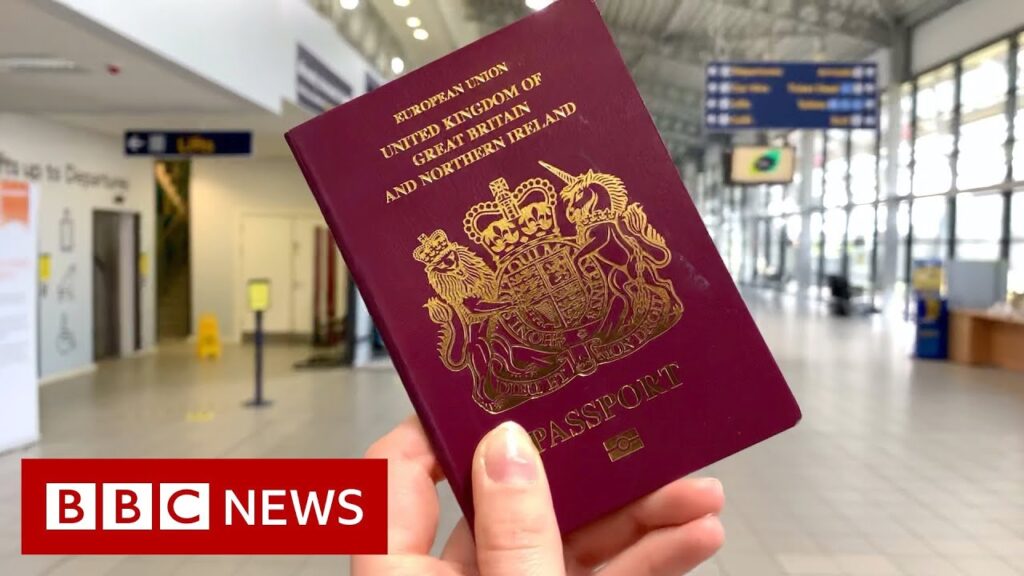The Resilience of Helicopter Services in Mexico During the Pandemic
The onset of the COVID-19 pandemic in early 2020 brought unprecedented challenges to multiple sectors worldwide, and aviation, including helicopter services in Mexico, faced immense pressure. Despite the obstacles, the helicopter industry displayed remarkable resilience, adapting swiftly to the changing environment. Helicopter operators in Mexico were essential in providing emergency medical transportation and supporting public health efforts, as they were able to reach remote areas where medical facilities were scarce or non-existant.
Another aspect that underlines the resilience of Mexico’s helicopter services during the pandemic is their role in maintaining critical supply chains. As the pandemic disrupted traditional transport routes, helicopter services became an invaluable asset in transporting essential goods quickly and efficiently across the region. They proved to be particularly crucial in the movement of medical supplies and personnel, reaffirming their importance in crisis management and response.
Moreover, the helicopter sector in Mexico saw a shift towards implementing stricter health and safety protocols to ensure the safety of crew, passengers, and the population at large. This included extensive sanitization procedures, social distancing measures where possible, and the introduction of personal protective equipment for staff. The quick adaptation and commitment to safety protocols ensured that helicopter services could continue to operate and play a vital role during the health crisis.
Adapting to New Norms: Helicopter Flights in the Face of Covid-19
The emergence of Covid-19 has dramatically influenced every aspect of global travel, with helicopter services in Mexico undergoing significant changes to adhere to new health and safety protocols. The sector has witnessed the introduction of stringent sanitization measures to ensure that both passengers and crew are protected during their journey. From disinfecting surfaces after each flight to mandating the wearing of masks, helicopter operators have adapted swiftly to these new norms.
Additionally, in an effort to maintain social distancing, helicopter companies have had to rethink their passenger capacity policies. Reducing the number of passengers aboard each flight has become a common practice, allowing for ample space between individuals. This measure, while reducing the efficiency of transportation, has given passengers a sense of safety and has been crucial for continuing flight operations in these challenging times.
Helicopter pilots and staff have also been undergoing regular health checks and training to better equip themselves with the knowledge of handling flights during a pandemic. Temperature screening before boarding has become routine, providing another layer of security and peace of mind for those who must travel by air. Ensuring the well-being of the pilots is equally critical, as they are the frontline workers in the aviation sector.
Beyond the immediate changes, helicopter services in Mexico are also embracing technological advancements to manage bookings and customer service. Contactless services, including online reservations and electronic payments, are being encouraged to minimize physical contact. These digital transformations not only comply with Covid-19 safety guidelines but are setting a new standard for convenience in helicopter travel.
Sky-High Safety: Mexico’s Helicopters and Pandemic Protocols
In the wake of the global health crisis, Mexico has witnessed a dynamic shift in its approach to helicopter operations. From private charters to rescue missions, stringent safety measures have become not merely an option but a mandate. The Mexican aviation industry has been quick to adapt, introducing new protocols and adjustments to ensure the well-being of passengers and crew alike, embodying the principle of ‘sky-high safety’ even amidst uncertain times.
Heli-tourism and business-related helicopter trips have undergone a transformation in Mexico, as providers now rigorously implement enhanced disinfection procedures. Before and after every flight, high-contact surfaces within both the cabin and cockpit are sanitized with specialized solutions that meet global health standards. These rigorous cleaning regimens are designed to provide peace of mind by drastically reducing the risk of viral transmission among those traveling by helicopter.
The changes extend beyond the physical interiors of the aircraft. Flight crew members, including pilots and maintenance personnel, are now subject to regular health screenings and are equipped with personal protective equipment (PPE). Such precautions ensure that every person involved in the helicopter’s operation is safeguarded, reflecting an unwavering commitment to safety at every possible juncture. Training on these practices is continuous, ensuring skills and protocols remain sharp and adherent to the latest health recommendations.
Passengers have not been left out of Mexico’s comprehensive safety push. In line with public health directives, travelers are obliged to undergo temperature checks, complete health questionnaires, and wear masks during the entirety of their journey. Some operators have taken additional steps, such as limiting the number of passengers per flight to enhance social distancing, thus optimizing in-flight safety without compromising service quality.
Despite the challenges posed by the pandemic, Mexico’s helicopter services have rapidly evolved, setting a benchmark for pandemic-responsive aviation protocol. Through the collaborations of industry leaders, health experts, and government entities, a resilient framework has materialized – one that’s aimed at ensuring the continuity of essential air services while vigorously guarding against the spread of illness in the skies.
Continuing Operations: How Mexican Helicopter Companies Are Surviving
In the face of economic fluctuations and challenging market dynamics, Mexican helicopter companies have demonstrated remarkable resilience. Diversification of services has been a key factor in their survival. By expanding their offerings to include VIP transportation, medical evacuation services, and support for the oil and gas industry, these companies have not only stayed afloat but also tapped into new revenue streams.
Another decisive move for the survival of helicopter operations in Mexico has been the strategic partnership and alliances with global industry players. These collaborations have allowed Mexican operators to incorporate advanced technology and international safety standards into their services. Such advancements have bolstered their competitiveness on both a domestic and an international scale.
Cost optimization has also played a crucial part in ensuring the continuity of these companies. Many have revisited their operational processes, trimming excess wherever possible, while maintaining the integrity of their services. These measures have led to more efficient fuel use, better maintenance scheduling, and a reduction in overall operational costs without compromising service quality.
Lastly, investment in staff training and customer service has become a linchpin for these companies. By ensuring that pilots and maintenance crews are well-trained and keeping customer service at the forefront of their business, they have solidified their reputation for reliability and excellence in a market that demands nothing less.
Flying Above Challenges: The Response of Helicopter Industry to the Pandemic
As the world faced the unprecedented upheaval caused by the COVID-19 pandemic, industries across the board were thrown into disarray. However, the helicopter industry in Mexico displayed remarkable resilience, adapting quickly to the new challenges. Operators and manufacturers came together, identifying mission-critical services where they could contribute significantly. Medical evacuations and the transport of healthcare personnel became a priority, ensuring timely aid even in the most remote areas. Helicopters, thus, became a crucial link in the country’s healthcare response, flying into regions that were otherwise cut-off due to lockdowns and travel restrictions.
The industry also saw a paradigm shift in its operating protocols to meet the new health guidelines. Enhanced safety measures were introduced, with operators conducting extensive cleaning and sanitization processes for both the aircraft and their facilities. The implementation of strict onboard passenger distancing and the use of personal protective equipment (PPE) became the norm. In the face of adversity, helicopter companies in Mexico not only ensured the continuity of their services but also prioritized the safety and well-being of passengers and crew.
Moreover, the pandemic accelerated the integration of technological advancements within the helicopter industry. There was a noticeable uptick in the utilization of touchless technology, which streamlined operations while minimizing physical interactions. Drones, often considered an emerging competitor, were also embraced as a complementary tool for tasks such as delivering supplies and performing aerial surveillance to enforce quarantine measures. The collaborative spirit and innovative approaches adopted by the helicopter industry in Mexico symbolize its dedication to overcoming obstacles and setting a precedent for future crises.
The Unseen Heroes: Helicopter Pilots Navigating the Pandemic Skies
As the world ground to a halt with the outbreak of COVID-19, the skies cleared of most air traffic. But amid the vast quiet of the once busy airspace, a group of aviators continued to soar, providing critical services when they were needed most. The helicopter pilots of Mexico became the unseen heroes of the pandemic, navigating complex challenges to deliver medical supplies, transport patients, and enable essential workers to continue their life-saving duties. These pilots, often flying in solitary conditions, faced unparalleled pressures and embraced their roles with unwavering dedication, understanding that their contributions were vital to the nation’s pandemic response.
Operating under strict safety protocols, helicopter pilots adapted quickly to the changing landscape. They underwent rigorous health checks, and their helicopters were continually disinfected to reduce the risk of spreading the virus. The resilience and ability to adapt built trust among communities and medical staff, as they knew that these pilots were not only skilled in the air but also committed to safety on every level. By ensuring that their missions were carried out with precision and care, they kept the lifeline open for many, especially in remote areas where access to medical facilities was severely limited.
The silent work of these aviation professionals did not just encompass the transportation of goods and individuals. They also facilitated aerial surveys, provided support to law enforcement, and played a key role in planning and executing public health strategies. From the early days of the pandemic, when uncertainty was at its peak, to the phase of vaccination and recovery, helicopter pilots remained on the frontline. Their unflagging spirit, often unseen and unrecognized, signifies true heroism in navigating not just the skies but the turbulent times brought forth by the pandemic.



